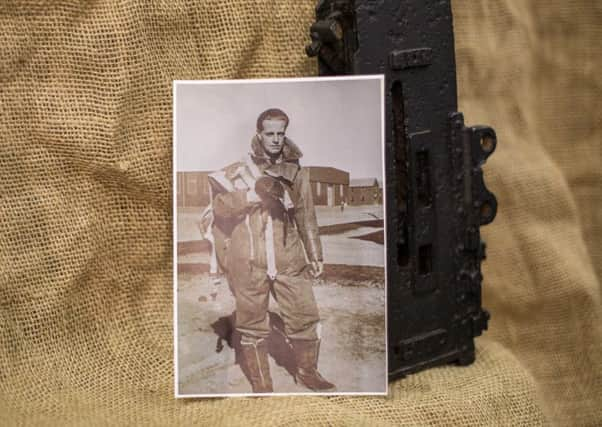Exhibit of the Week: Denys Teare's Lancaster Browning .303 gun


Denys landed in a tree. Once on the ground, he set off walking, trying to cover as much distance as possible before morning. He came across two local French conscripts, who had been ordered to guard a bridge in Bar-le-Duc by the German authorities. Excited to meet an aviateur anglais, the two men took Denys to the home of Mm. Barbierri, where Denys stayed for several weeks. A plan had been put in place for Denys to be escorted down the line by an agent, but this was scrapped in December after the capture and execution of twelve Resistance men involved with the line. Denys then moved across the village to the home of cheese merchant M. Collin, who had previously helped two US airmen escape to England.
Denys decided that he could be of use to the Resistance, and so asked to stay, rather than be smuggled into Switzerland, where he would have been interned. It had become clear to him that members of the local Resistance were unfamiliar with many of the British weapons that had been dropped, so he put himself forward as a weapons instructor. In January 1944, Denys was taken by car to join a Resistance group. He was given a false ID card, with the name ‘Denys Thomas Lebenec’, and was to remain with the Resistance for the next 9 months. He became fluent in French and well trained in the art of sabotage and resistance work.
Advertisement
Hide AdAdvertisement
Hide AdOn 8 June 1944, Denys was with Resistance member Robert Lhuerre, who had served with the demobilised French Air Force, when the building they were in was raided by SS, Gestapo and German military police. Denys and Robert hid in the attic, but as the search continued and discovery was imminent, Robert presented himself, admitting to being the Resistor that they were looking for, and stating that he was the only one in the building. He was immediately arrested and the search was called off, saving Denys from capture. Robert and three other members of the Bar-le-Duc Resistance group were executed by German troops on 28 August 1944. A few days later the town was liberated by American forces.
On his eventual return to England, Denys discovered that all his fellow crew members had survived after bailing from the Lancaster. Air Gunner Sergeant Robert Parkinson and Wireless Operator Syd Horton had found each other on the ground, and escaped from France via a fishing boat from Brittany to Falmouth. Pilot Bob Cant and Flight Engineer Sergeant Eric Dickson had separately managed to get to Switzerland. Cant eventually decided to escape back into France, where he made it to England with the aid of the Resistance. Flight Navigator Sergeant George Thomas made ground in France, but was captured by a German frontier patrol. He was interned at Fresnes prison in Paris, before being transferred to Stalag IVB at Muhlberg, then on to Kulwitz, where he was liberated on 17th April 1945.
In the years following the war, Denys made several visits to France, to the area where the Lancaster had crashed. On one of his visits he was presented with one of the aircraft’s guns, a Browning .303, which had been buried for about 50 years before being unearthed by a farmer. Denys took the gun home, and upon retirement to the Isle of Man, allegedly took the gun with him by strapping it to the roof rack of his campervan.
The stories of individuals like Denys Teare can be found in Eden Camp’s Escapers and Evaders exhibition, compiled by the Escape Lines Memorial Society.